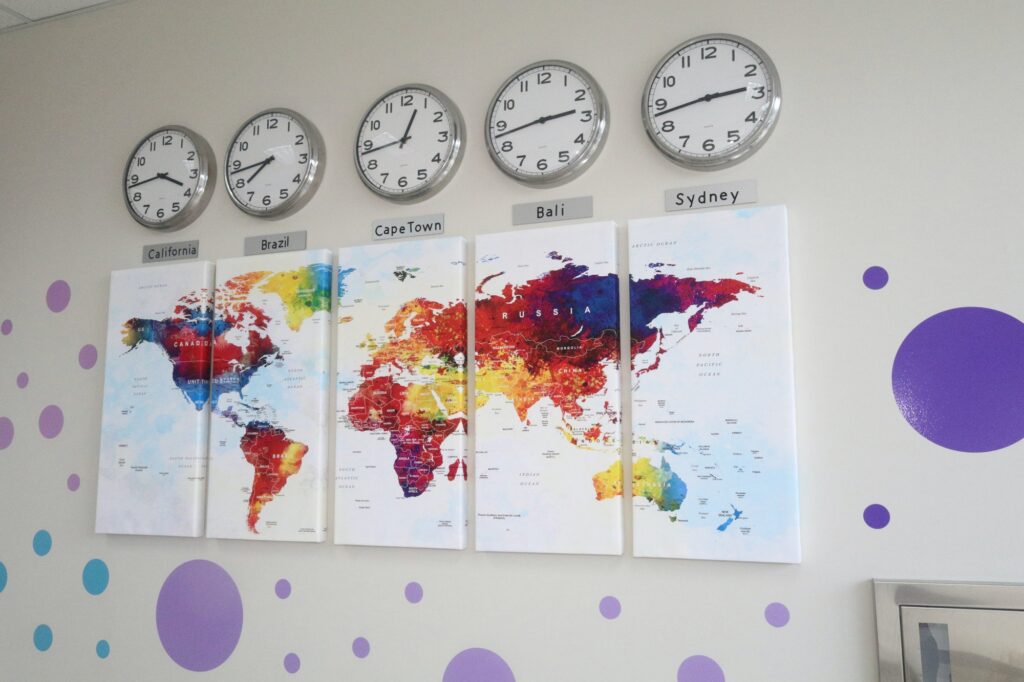Every purchase made online is encrypted with a high level of security you’ve come to expect. Your private information is never shared nor sold, so you can buy with confidence. You can also visit our store if you are in the St. Louis area.

Estimated reading time: 7 minutes
Relocating across time zones is an exciting journey, but it often brings a sneaky companion: jet lag. That can turn your nights into a struggle, tossing and turning while the world sleeps. As a result, establishing healthy sleep habits is key to feeling your best as you settle into your new home. But how to do it? Don’t worry! This article will offer practical strategies for overcoming jet lag after long-distance relocation.
Table of Contents
Related Links
Whether moving for work, study or just a change of scenery, mastering your sleep in your new environment is essential for a smooth transition. Let’s explore how you can turn those restless nights into peaceful slumber.
Understanding Jet Lag
Jet lag is more than just feeling tired after a long flight. In truth, your body’s response to a sudden change in time zones can mess with your daily routine. Think of it like your body’s internal clock being out of sync with the new local time. This misalignment can cause symptoms like sleeplessness, daytime fatigue, difficulty concentrating, and even mood changes.
But why does this happen? Our bodies follow a natural 24-hour cycle, known as the circadian rhythm, which determines when we feel awake and sleepy. Traveling across different time zones disrupts this rhythm. Your body might think it’s time to sleep in the middle of the day in your new location, or vice versa.
The good news is that understanding jet lag is the first step in managing it. By recognizing what’s happening in your body, you can take proactive steps to adjust quickly. That can improve your sleep and help make the move less stressful. As a result, Let’s explore simple, effective strategies to help your body adapt, making your transition to a new time zone smoother and your move more stress-free.
The Science Of Sleep And Time Zones

Sleep isn’t just a time-out from your day. It’s a crucial part of your body’s functions. During sleep, your body repairs, stores memories, and recharges energy. Your circadian rhythm regulates this process, an internal clock that follows roughly a 24-hour cycle. It’s influenced by light and temperature, which tell you when to feel sleepy and when to wake up.
But what happens when you move to a new time zone? Your circadian rhythm needs time to adjust. It’s like having an internal clock still set to your old home’s time. If it’s 7 AM in your new city, but your body thinks it’s still 4 AM, you’ll likely feel dizzy and disoriented. This mismatch can affect not just your sleep but also your appetite, mood, and energy levels.
Understanding this science is key to managing jet lag. By gradually adjusting your sleep schedule before your move, exposing yourself to sunlight during the day in your new location, and creating a sleep-friendly environment, you can help your internal clock reset more quickly. However, this won’t happen overnight – it typically takes about a day for each time zone crossed to adjust. Fortunately, with patience and the right strategies, you can align your circadian rhythm with your new time zone, leading to better sleep and a more enjoyable start in your new home.
Practical Tips For Overcoming Jet Lag After Long-Distance Relocation
Effectively tackling jet lag can make your transition to a new time zone much smoother. Here are some down-to-earth, practical tips to help you adjust quicker and sleep better:
- Adjust Your Sleep Schedule Before You Move: A few days before your relocation, start shifting your bedtime. If you’re moving east, go to bed an hour earlier each night. If you’re heading west, do the opposite. This gradual change can ease the shock to your system once you arrive.
- Stay Hydrated, Limit Caffeine And Alcohol: Drinking plenty of water can help minimize jet lag symptoms. However, try to avoid too much caffeine and alcohol, especially close to bedtime, as they can disrupt your sleep.
- Get Plenty Of Sunlight: Sunlight is a powerful tool for resetting your internal clock. Once you arrive, spend lots of time outdoors during daylight hours. This natural light exposure will help signal your body that it’s time to be awake.
- Create A Comfortable Sleep Environment: Your sleeping space greatly affects how well you sleep. Make sure your bedroom is quiet, dark, and cool. A comfortable mattress is also a big influence – investing in a good mattress or ensuring the one in your new home meets your needs. The right mattress can make a world of difference in the quality of your sleep.
- Maintain A Regular Sleep Schedule: Once you’re in your new location, stick to a consistent sleep schedule, even on weekends. This regularity helps your body clock adjust more quickly.
- Consider Short Naps: If you’re struggling, short naps (20-30 minutes) can help you recharge during the day. But be careful not to nap too late in the day or for too long, as this can make it harder to sleep at night.
- Stay Active: Regular physical activity can promote better sleep. However, avoid vigorous exercise close to bedtime as it can be too stimulating.
Creating A Sleep-Friendly Environment
Creating a sleep-friendly environment in your new home is key to overcoming jet lag after long-distance relocation. Here’s how to set up your bedroom for optimal sleep:
Choose The Right Mattress
A good mattress is foundational to quality sleep. It can even help if you’re prone to sleep disorders. Look for one that supports your preferred sleeping position and feels comfortable. However, what works for someone else might not work for you, so choose based on your comfort.
Keep It Cool, Dark, And Quiet
Your bedroom should be a calm oasis. A cool, dark, and quiet environment tells your body it’s time to sleep. Consider room-darkening shades or curtains to block out light, and if noise is an issue, consider using earplugs or a white noise machine.
Limit Electronic Devices
Screen blue light can interfere with sleep. Avoid using phones, tablets, and laptops in the bedroom before bedtime.
Create A Relaxing Bedtime Routine
Creating a relaxing pre-sleep ritual can gently nudge your body that it’s time to relax and prepare for rest. Consider activities like indulging in a good book, practicing light yoga, or enjoying calming melodies to ease into a peaceful slumber.
Keep Work Out Of The Bedroom
If possible, avoid working in your bedroom. Keeping this space dedicated to sleep and relaxation can strengthen the mental association between your bedroom and rest.
Consider Comfortable Bedding
The right pillows and bedding can make a big difference. Look for materials that are comfortable for you and suitable for the climate in your new location.
Manage Light And Noise
Consider using an eye mask or earplugs if you can’t control external light or noise. These small adjustments can significantly improve your sleep quality.
When To Seek Professional Help
If you’ve tried these tips and still struggle with sleep after your move, it might be time to seek professional help. Persistent sleep issues can impact your overall health and well-being. If you feel constantly tired during the day, unable to concentrate, or experiencing mood swings over an extended period, these could be signs that your jet lag is more than a temporary nuisance. A healthcare professional can offer guidance tailored to your specific situation, helping you find solutions that work for you and ensuring your transition to a new time zone doesn’t compromise your health.
Embracing New Horizons: Overcoming Jet Lag With Ease
As we wrap up, remember that overcoming jet lag after long-distance relocation is important in embracing your new environment. Fortunately, understanding your body’s needs and creating a sleep-friendly space can ease the transition and help you enjoy your new adventure. Also, patience and a few practical adjustments can go a long way in syncing your internal clock to your new time zone. So, take these tips to heart, and soon you’ll find yourself sleeping soundly, ready to explore and thrive in your new home.
Contact STL Beds Now
You can also contact us by filling out the form below. Make sure to fill in as many fields as possible so we can respond to you with the most accurate information!
